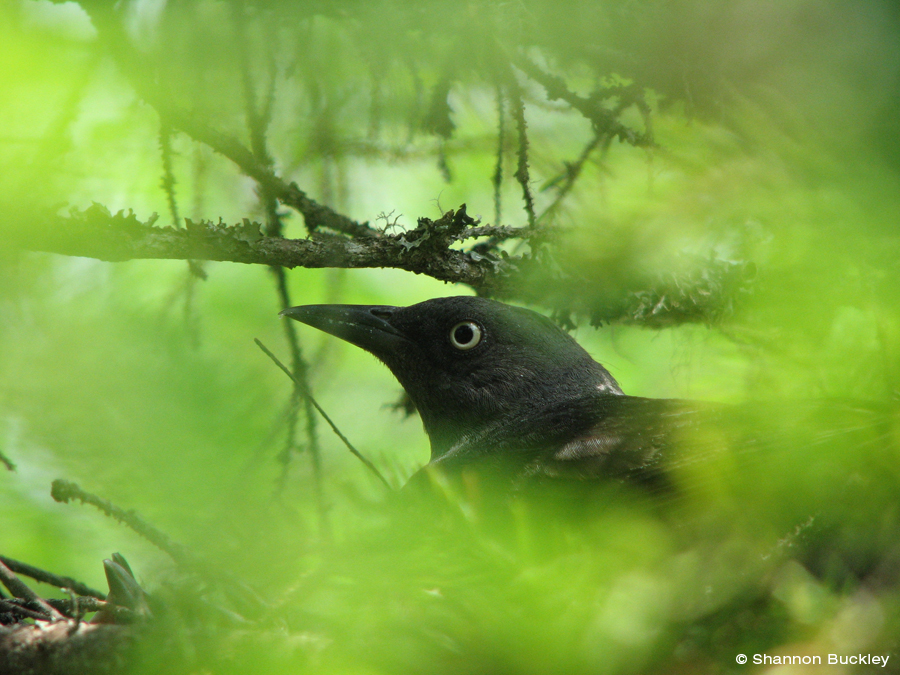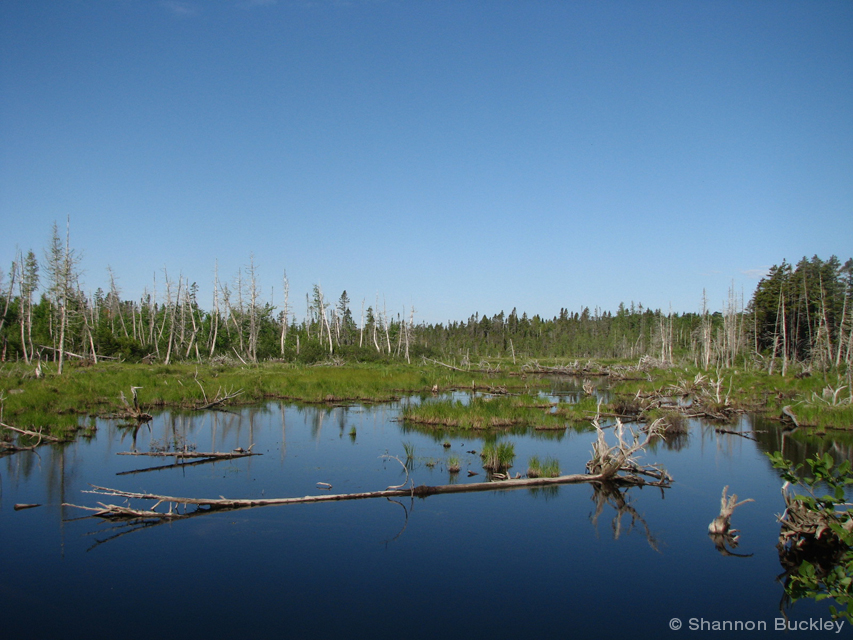http://feedproxy.google.com/~r/sciencedaily/plants_animals/~3/3n94gKfFfDA/151007185022.htm?utm_source=feedburner&utm_medium=email
Cones, squirrels, and rusty blackbird nests
Declining songbirds caught in a complex web
Conservation Issues
Rusty Blackbirds have experienced one of the most significant declines ever documented among North American birds in recent times. Data from long-term surveys such as the North American Breeding Bird Survey and Christmas Bird Count suggest that Rusty Blackbird numbers have plummeted a staggering 85-95% since the mid-1900’s (Greenberg and Droege, 1999). Anecdotal accounts also suggest a chronic, more gradual decline beginning as early as the first part of the twentieth century. Despite this precipitous drop in population, it is only relatively recently that the scientific community has become more broadly aware of the Rusty Blackbird’s desperate plight. Earlier recognition of population declines was likely inhibited in part by the elusive nature of this species, their close association with wooded wetlands and other habitats that are often difficult to access, and cultural norms that cause “blackbirds” to be overlooked as common and resilient species (Greenberg and Matsuoka, 2010).
Several hypotheses have been suggested to explain the decline. Loss of wooded wetlands in southeastern wintering grounds is a likely contributor, as over 80% of this habitat has been converted to agriculture and other land uses. Other possible factors on the wintering grounds include increased competition for food with other blackbird species – such as Red-winged Blackbirds and Common Grackles – as well as increased exposure to an unknown disease to which it has not developed strong immunity.
On the breeding grounds, habitat loss and degradation are also concerns. Climate change is causing boreal breeding wetlands to become increasingly prone to drying and is generally altering hydrological cycles and weather patterns in ways that threaten the species’ habitats and associated food resources. Because Rusty Blackbirds depend on shallowly flooded boreal wetlands while breeding and raising young, future climatic changes may have a profound effect on the continued capacity for successful reproduction and population recruitment. Rusty Blackbirds have also been found to have high levels of mercury in their bodies on the breeding grounds, which may have harmful effects on their immune systems and general health (Edmonds et al, 2010).
Although intensive studies over the last decade have yielded much-needed information on basic biology, ecology and conservation of these unusual blackbirds, any central cause behind their plunging population remains obscure and speculative. What is probable is that there is no “smoking gun” and no single cause for their decline, but rather a combination of different stressors working together to create a “perfect storm.”
The International Rusty Blackbird Working Group (IRBWG) strives to use strong science to evaluate strategies to reverse the extensive decline of this vulnerable species. However, we still lack critical information about certain aspects of Rusty Blackbird ecology, especially during migration. In 2014, the IRBWG will launch a Spring Migration Blitz to increase our understanding of Rusty Blackbird migration in order to advance conservation of the Rusty Blackbird. In addition, the group has identified ongoing research needs that address knowledge gaps; this research will allow us to develop and hone effective conservation strategies for this declining species.
REFERENCES
Edmonds, S. T., Evers, D. C. , Cristol, D. A., Mettke-Hofmann, C. , Powell, L. L., McGann, A. J., Armiger J. W., Lane, O. P., Tessler, D. F., Newell, P., Heyden, K. and O’Driscoll, N. J. (2010). Geographic and seasonal variation in mercury exposure of the declining Rusty Blackbird. Condor, 112(4): 789–799.
Greenberg, R. and Droege, S. (1999). On the decline of the Rusty Blackbird and the use of ornithological literature to document long-term population trends. Conservation Biology, 13(3): 553–559.
Greenberg, R. and Matsuoka, S. M. (2010). Special section: Rangewide ecology of the declining Rusty Blackbird. Rusty Blackbird: Mysteries of a species in decline. Condor, 112(4): 770–777.












No comments:
Post a Comment